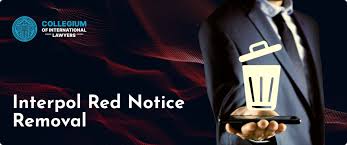The Presidential Autopen Controversy: A Modern Dilemma
The use of autopen technology in the signing of significant presidential documents has raised numerous ethical and legal questions in recent years. As modern communication methods have evolved, the reliance on autopen systems, which mechanically reproduce a signature, has become increasingly common in the White House. This article delves into the implications of this practice, particularly its legitimacy and the trust placed in the office of the President. For instance, one might consider the presidential autopen controversy legal implications of autopen signatures when discussing the accuracy and authority of documents produced under such circumstances. As we navigate this complex subject, it’s essential to discern the balance between efficiency and authenticity in leadership.
Historical Context of Presidential Signatures
The tradition of presidential signatures dates back to the founding of the United States, where the president’s signature on a document often carried significant weight and authority. From treaties to executive orders, each stroke of the pen symbolized the president’s commitment and intention regarding important matters of state. However, the advent of technology has transformed this process, leading to the introduction of autopen devices in the 20th century. With the increasing volume of correspondence and legislation that modern presidents face, the autopen offers a means to streamline operations while allowing the president to maintain a semblance of control over their signature.
Understanding Autopen Technology
Autopen devices operate by replicating a pre-existing signature, allowing for the quick signing of documents without the president’s physical presence. This technology consists of a pen holder that moves across paper in alignment with a digitized signature file. Autopens can be beneficial for busy presidents who must manage a vast amount of paperwork, especially when they are traveling or engaged in other critical tasks. While the technology serves a practical purpose, it raises questions about authenticity and the sanctity of the presidential signature.

Ethical Considerations
The ethical implications of using autopen signatures are a matter of considerable debate. Proponents argue that autopen use allows presidents to handle their responsibilities effectively without compromising on the appearance of direct involvement. Opponents, however, raise concerns about transparency and the public’s right to good faith actions from its leaders. When the president’s signature, a symbol of personal commitment, is mechanically replicated, does this diminish the trust citizens place in their elected officials?
Legal Ramifications
The legality of autopen signatures further complicates the conversation. While the use of an autopen may be convenient, it also presents challenges in terms of legal validity. In many cases, documents signed with an autopen may not hold the same weight as those signed in person. Questions arise regarding the authenticity of documents executed under such conditions, particularly in matters such as treaties, congressional acts, and legal agreements. Some legal scholars argue that a president’s authority to delegate signature responsibilities is limited by constitutional provisions, while others contend that the necessity for efficiency in governance justifies the technology’s use.
Public Perception and Political Consequences
Public opinion regarding the use of autopen signatures varies widely. Some citizens view it as a necessary adaptation to modern governance, while others perceive it as indicative of a disconnection between the president and the duties of leadership. The political consequences of autopen usage can manifest in various ways, as lawmakers and constituents consider the implications for accountability and engagement. If citizens feel their president is detached or uninvolved, it can undermine trust in the administration and lead to calls for increased transparency and authenticity in governmental processes.

Case Studies and Examples
Various presidents have employed autopen technology throughout history, often responding to the demands of their roles while managing a vast array of responsibilities. For example, President Barack Obama was known to use an autopen during his administration, particularly to sign letters to military personnel or other routine correspondence. Similarly, President Donald Trump also utilized autopen technology for signing documents, prompting discussions about the significance of the signature in relation to the message being conveyed. Analyzing these case studies can provide insight into how public figures balance tradition and modernity in their approaches to governance.
The Future of Presidential Signatures
The conversation surrounding autopen signatures is likely to continue evolving as technology progresses and societal expectations change. Future administrations may seek to strike a balance between leveraging technology for efficiency and maintaining the authenticity and authority of presidential action. Moreover, ongoing discussions about the implications of autopen use may prompt legislative scrutiny and the potential for new guidelines governing this practice.
Conclusion
In summary, the presidential autopen controversy presents a multifaceted dilemma that intertwines ethical, legal, and political dimensions. As society becomes increasingly accustomed to technological advancements, the importance of retaining trust in elected officials remains paramount. The debate over the use of autopen signatures serves as a critical reminder of the need for transparency and accountability in governance, ensuring that the ideals of democracy are upheld in an ever-changing landscape.

Leave A Comment